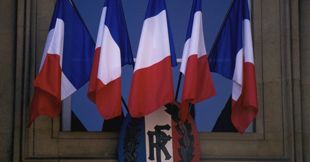Storia dell'articolo
Chiudi
Questo articolo è stato pubblicato il 12 giugno 2013 alle ore 14:23.
BASEL – The world’s central banks are engaged in one of the great policy experiments in modern history: ultra-easy money. And, as the experiment has continued, the risk of failure – and thus of the wrenching corrections and deep economic dislocations that would follow – has grown.
In the wake of the crisis that began in 2007, policy rates were reduced to unprecedented levels, where they remain today, and measures were taken to slash longer-term rates as well. Nothing like it has ever been seen before at the global level, not even in the depths of the Great Depression. Moreover, many central banks’ balance sheets have expanded to record levels, although in different ways and for different rationales – further underscoring the experimental character of the monetary easing now underway.
The risks implied by such policies require careful examination, particularly because the current experiment appears to be one more step down a well-trodden path – a path that led to the crisis in the first place.
Beginning with the sharp monetary-policy easing that occurred following the 1987 stock-market crash, monetary policy has been used aggressively in the face of every economic downturn (or even anticipated downturn) ever since – in 1991, 1998, 2001, and, with a vengeance, following the events of 2007. Moreover, subsequent cyclical tightening was always less aggressive than the preceding easing. No surprise, then, that policy rates (both nominal and real) have ratcheted ever downward to where they are today.
It can, of course, be argued that these policies produced the Great Moderation – the reduction in cyclical volatility – that characterized the advanced market economies in the years leading up to 2007. Yet it can also be argued that each cycle of monetary easing culminated in a credit-driven boom and bust that then had to be met by another cycle of easing. With leverage and speculation increasing on a cumulative basis, this whole process was bound to end with monetary policy losing its effectiveness, and the economy suffering under the weight of imbalances (or headwinds) built up over the course of many years.
The Swedish economist Knut Wicksell raised concerns about such problems long ago. He suggested that a money rate of interest (set in the banking system) that was less than the natural rate of interest (set in the real economy) would result in inflation. Later, economists in the Austrian tradition noted that imbalances affecting the real side of the economy (malinvestments) were of equal concern.
Later still, Hyman Minsky contended that credit creation in a fiat-based monetary economy made economic crises inevitable. Finally, many economists in recent decades have identified how excessive leverage can do lasting damage to both the real and financial sides of the economy.
©RIPRODUZIONE RISERVATA
Permalink
Ultimi di sezione
-

Gli economisti
Perché preoccuparsi per la Francia?
di Paul Krugman
-

gli economisti
Krugman: il dibattito sull'austerity è politicizzato
di Paul Krugman
-
Italia
A Theory About European Naval Domination
di Paul Krugman
-

Italia
Una teoria sul predominio navale dell'Europa
di di Paul Krugman
-

IL PIANO JUNCKER
Gros: consumi prima che investimenti
di Daniel Gros










